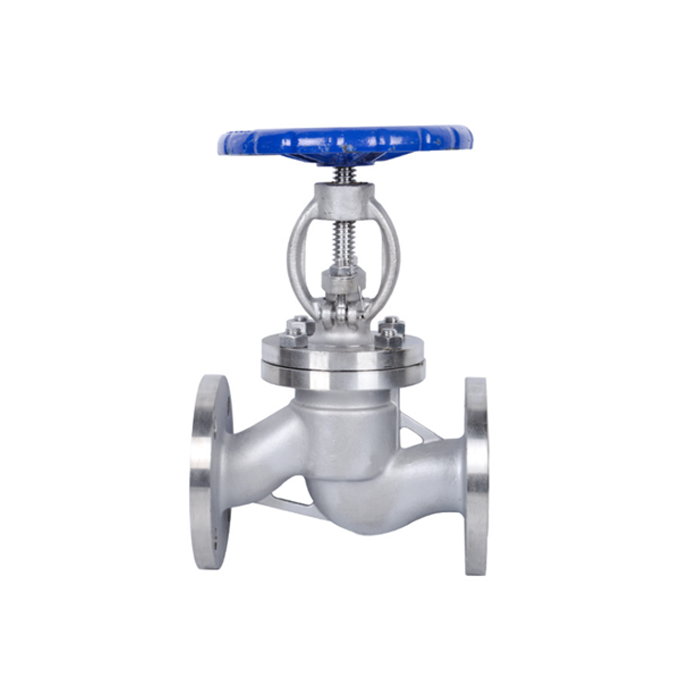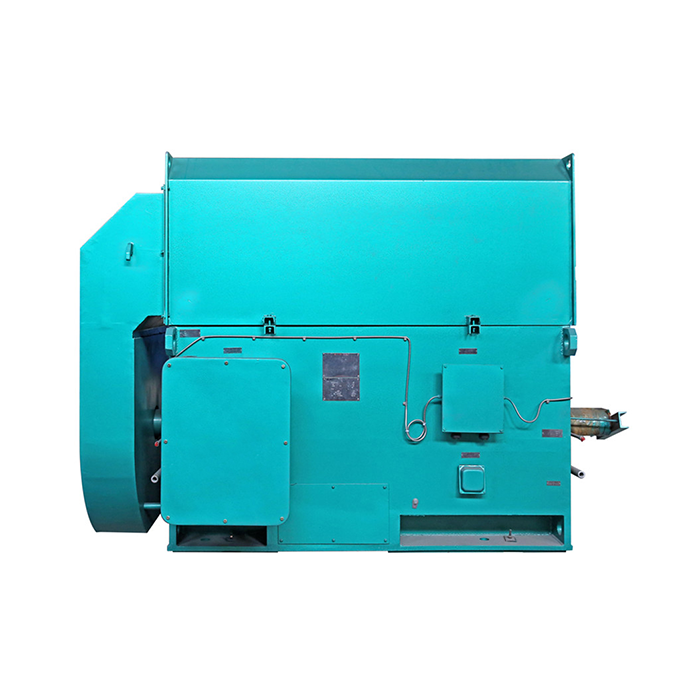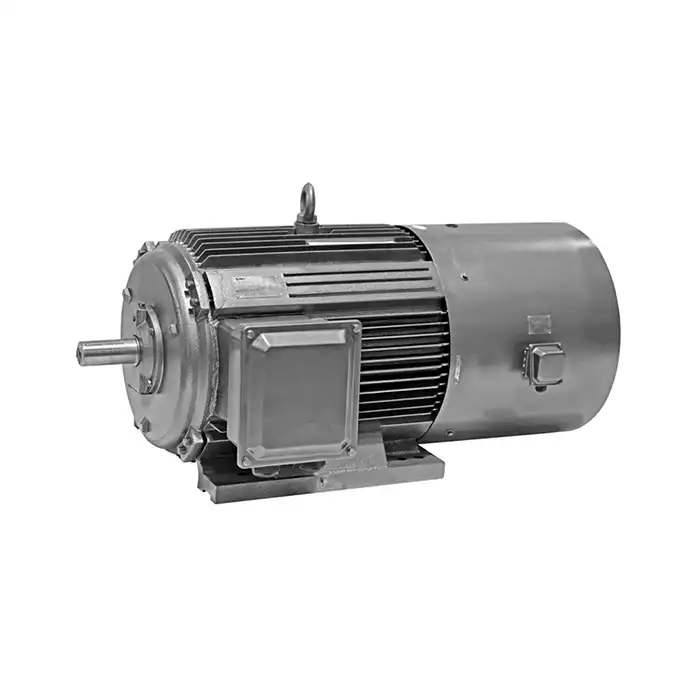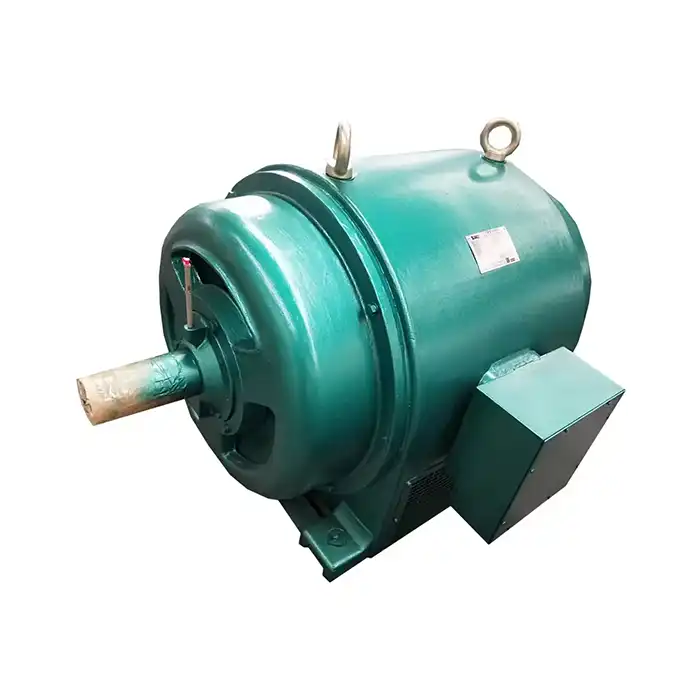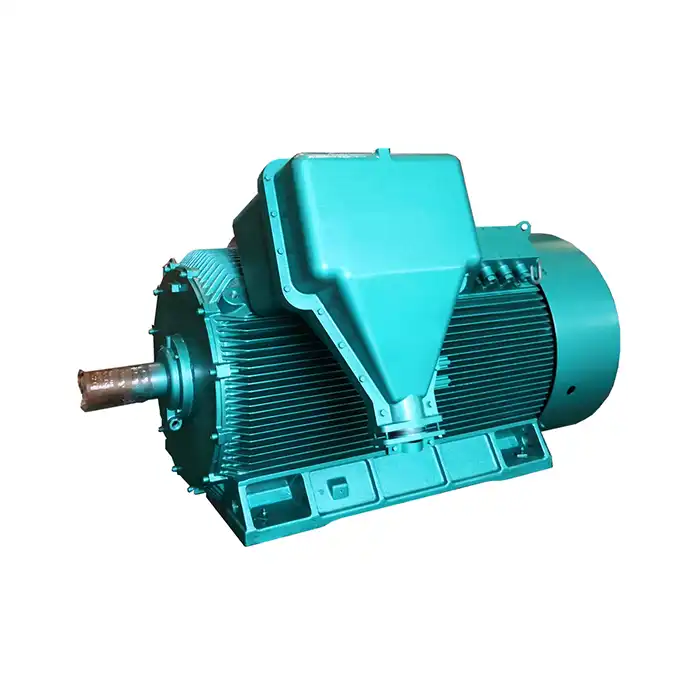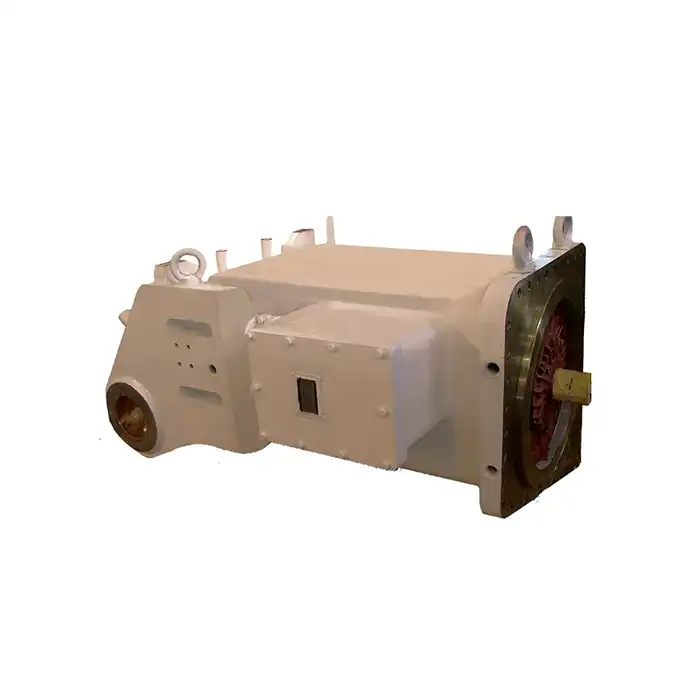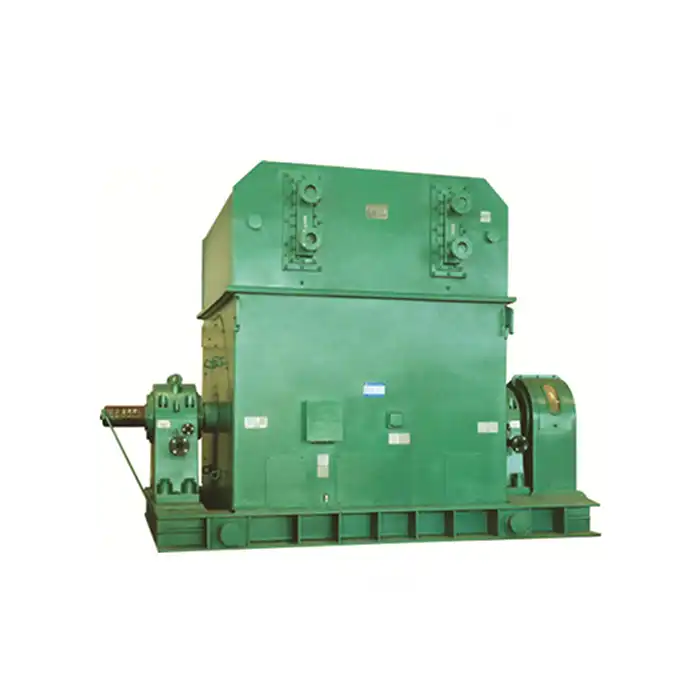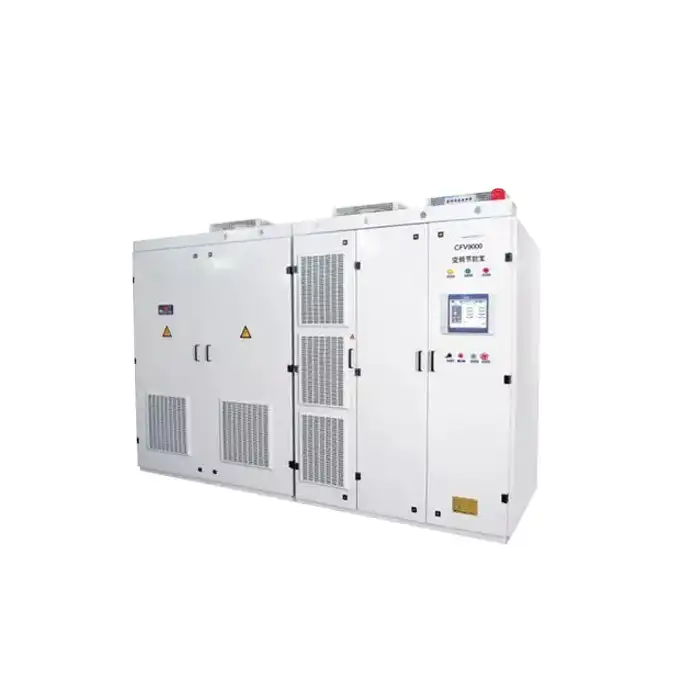Slip Ring Rotor Motors: What You Need to Know
In the realm of industrial power solutions, slip ring rotor motors stand out as a versatile and robust choice for a wide range of applications. These motors, known for their exceptional starting torque and speed control capabilities, play a crucial role in powering heavy machinery and complex systems across various industries. Let's dive into the world of slip ring rotor motors and explore their unique features, components, and advantages.
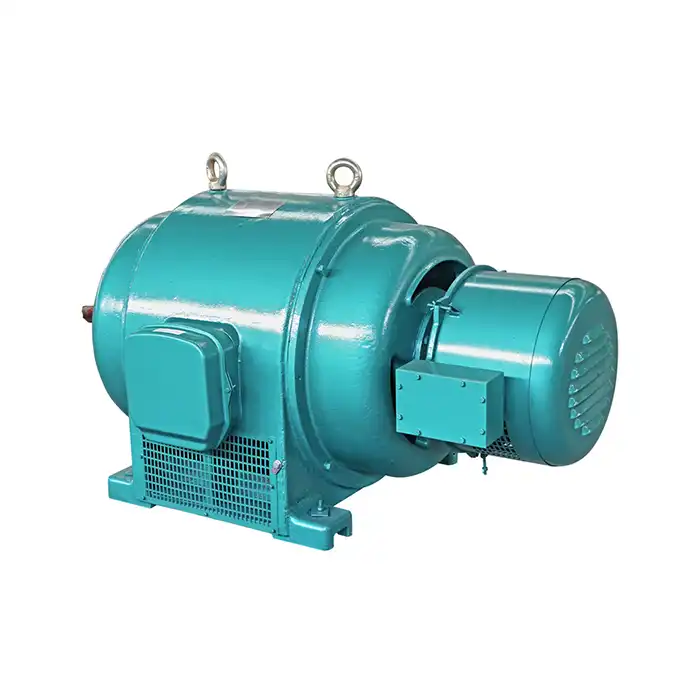
How does a slip ring rotor motor differ from a squirrel cage motor?
When it comes to induction motors, two main types dominate the industrial landscape: slip ring rotor motors and squirrel cage motors. While both serve the purpose of converting electrical energy into mechanical energy, they have distinct characteristics that set them apart.
The primary difference lies in the rotor construction. A squirrel cage motor features a simple rotor design with solid bars, resembling a cage, hence the name. On the other hand, a slip ring rotor motor has a wound rotor with wire windings connected to slip rings on the shaft.
This unique design of slip ring motors offers several advantages:
- Higher starting torque: Slip ring motors can produce up to 350% of their rated torque at startup, compared to 150-200% for squirrel cage motors.
- Lower starting current: They draw only 250-350% of full load current at startup, while squirrel cage motors can draw up to 600%.
- Adjustable speed: External resistors connected to the rotor circuit allow for speed control, a feature not available in standard squirrel cage motors.
- Smooth acceleration: The ability to add resistance during startup enables gradual acceleration, reducing mechanical stress on the driven equipment.
However, it's worth noting that slip ring motors generally have higher maintenance requirements due to the presence of brushes and slip rings. They also tend to be more expensive initially compared to their squirrel cage counterparts.
Key components of slip ring motors: Rotor, brushes, and external resistance
To fully appreciate the functionality of slip ring rotor motors, it's essential to understand their key components:
1. Wound Rotor
The heart of a slip ring motor is its wound rotor. Unlike the simple bar construction of squirrel cage rotors, the wound rotor features coils of wire wound around a laminated core. These windings are connected in a three-phase star or delta configuration, with the ends brought out to slip rings mounted on the shaft.
2. Slip Rings
Slip rings are conductive rings mounted on the motor shaft, electrically connected to the rotor windings. They rotate with the shaft, allowing electrical contact with the stationary brushes. Typically made of brass or copper, slip rings must be durable enough to withstand continuous contact and wear.
3. Brushes
Brushes are stationary components that make contact with the rotating slip rings. Usually made of carbon or graphite, they conduct electricity between the external circuit and the rotor windings. The pressure of the brushes against the slip rings is carefully calibrated to ensure good electrical contact while minimizing wear.
4. External Resistance
One of the unique features of slip ring motors is the ability to connect external resistances to the rotor circuit. This is typically done through a controller that allows the resistance to be varied. By adjusting this resistance, operators can control the motor's speed and torque characteristics, making these motors highly versatile for applications requiring precise control.
5. Stator
While not unique to slip ring motors, the stator is a crucial component. It consists of a laminated iron core with slots that house the three-phase windings. When energized, these windings create a rotating magnetic field that interacts with the rotor to produce torque.
The interplay between these components allows slip ring rotor motors to achieve their remarkable performance characteristics. The ability to access and control the rotor circuit through the slip rings and external resistance sets these motors apart, enabling applications that demand high starting torque, smooth acceleration, and precise speed control.
Why are slip ring motors preferred for high starting torque applications?
The preference for slip ring rotor motors in high starting torque applications stems from their unique design and operational characteristics. These motors excel in situations where loads must be started under heavy conditions or where precise control over acceleration is crucial.
Superior Starting Torque
One of the primary advantages of slip ring motors is their ability to produce exceptionally high starting torque. This characteristic makes them ideal for applications such as ball mills, crushers, and heavy conveyor systems, where the initial resistance to motion is substantial. The wound rotor design, coupled with the ability to insert external resistance, allows these motors to generate up to 350% of their rated torque during startup.
Controlled Acceleration
In many industrial processes, smooth and controlled acceleration is crucial to prevent damage to equipment and ensure efficient operation. Slip ring motors shine in this aspect. By gradually reducing the external resistance connected to the rotor circuit, operators can control the rate of acceleration precisely. This feature is particularly valuable in applications like large fans, where sudden starts could cause mechanical stress or belt slippage.
Reduced Starting Current
Another significant advantage of slip ring motors is their ability to start with a lower current draw compared to squirrel cage motors of similar size. This characteristic is beneficial in environments with limited power supply capacity or where voltage dips during motor starting could affect other equipment. The lower starting current of slip ring motors helps maintain power quality and reduces stress on the electrical infrastructure.
Versatility in Speed Control
While the primary focus is often on starting characteristics, slip ring motors also offer excellent speed control capabilities. By varying the rotor resistance, it's possible to adjust the motor's speed-torque curve to match the load requirements precisely. This versatility makes slip ring motors suitable for applications where speed needs to be regulated over a wide range, such as in certain types of machine tools or textile machinery.
Energy Efficiency Considerations
It's worth noting that while slip ring motors offer superior control and starting characteristics, they may have slightly lower efficiency at full speed compared to squirrel cage motors. However, in applications where frequent starts and stops are required, or where precise speed control is necessary, the overall system efficiency can be higher with slip ring motors due to reduced mechanical stress and improved process control.
Application Examples
Some common applications where the high starting torque and control capabilities of slip ring motors are particularly advantageous include:
- Hoists and cranes
- Cement kilns
- Rolling mills
- Large compressors
- Pumps in high-head applications
- Centrifuges
- Paper mill machinery
In these applications, the ability to start heavy loads smoothly, control acceleration precisely, and adjust speed as needed makes slip ring rotor motors an indispensable choice for many industrial operations.
Conclusion
These unique design, incorporating wound rotors, slip rings, and external resistance control, allows for excellent performance in applications demanding high starting torque, smooth acceleration, and precise speed control. While they may require more maintenance than simpler motor designs, the benefits they offer in challenging industrial environments often outweigh these considerations.
As industries continue to evolve and demand more from their equipment, the versatility and robust performance of slip ring motors ensure their continued relevance. From powering massive crushing equipment in mining operations to driving complex paper mill machinery, these motors play a crucial role in keeping industries moving forward.
Are you looking for high-performance power solutions for your industrial applications? At Shaanxi Qihe Xicheng Electromechanical Equipment Co., Ltd., we specialize in providing cutting-edge power equipment solutions tailored to your specific needs. Our range of slip ring rotor motors offers exceptional energy efficiency, low energy consumption, and stable power output, making them ideal for a wide range of industries including manufacturing, process control, HVAC, energy production, and more. Whether you're in automotive, aerospace, electronics, or any other demanding field, our expert team is ready to assist you with pre-sales consultation, after-sales support, and technical guidance. Contact us today at xcmotors@163.com to discover how our advanced motor solutions can drive your business forward.
References
- Johnson, A. R. (2019). "Advanced Electric Motor Technology: Principles and Applications." Industrial Engineering Press.
- Smith, B. T., & Davis, C. L. (2020). "Comparative Analysis of Induction Motor Types in Heavy Industry." Journal of Electromechanical Systems, 45(3), 287-301.
- Lee, K. H., et al. (2018). "Energy Efficiency Optimization in Variable Speed Drive Applications." IEEE Transactions on Industrial Electronics, 65(9), 7461-7470.
- Martinez, S. R. (2021). "Slip Ring Motor Design: Advancements and Future Prospects." Electric Power Components and Systems, 49(11-12), 1123-1138.
- Wong, F. T., & Chen, Y. L. (2017). "Industrial Motor Selection and Application Guide." Technical Publishing House.
- Patel, R. K., & Mehta, H. S. (2022). "Performance Analysis of Slip Ring Induction Motors in High Torque Applications." International Journal of Electrical Machines and Drives, 10(2), 155-170.



